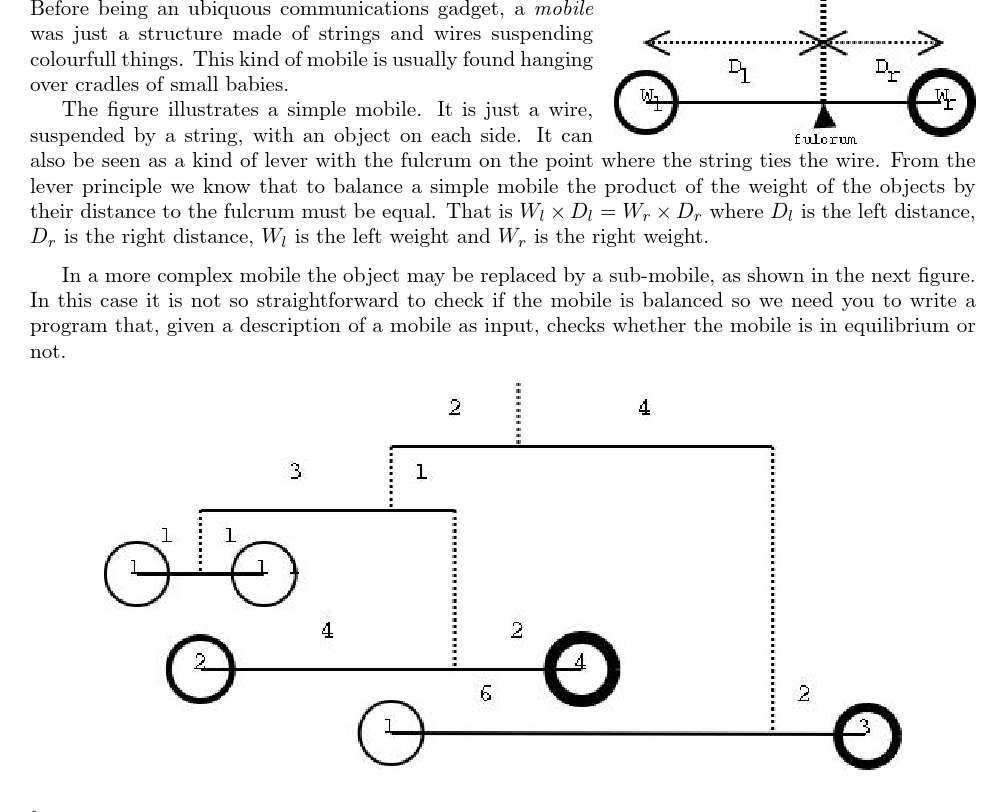Description

Input

Output

Examples
Input
1
0 2 0 4
0 3 0 1
1 1 1 1
2 4 4 2
1 6 3 2
Output
YES
Translation
输入一个树状天平,根据力矩相等原则判断是否平衡。
采用递归(先序)方式输入:每个天平格式为(W_l,D_l,W_r,D_r),当(W_l)或(W_r)为(0)时,表示该“砝码”实际是一个子天平,接下来会描述这个子天平。当(W_l=W_r=0)时,会先描述左子天平,然后是右子天平。
其正确输出为(YES),否则输出(NO)。
Solution
这道题目的输入就采取了递归方式定义,所以编写一个递归函数进行输入比较自然。实际上,在输入的过程中就可以完成判断。由于使用了引用传值,因此,代码很精简。
本题极为重要,是递归的好题。
Code
#include <iostream>
#include <cstdio>
#include <cstdlib>
#include <cstring>
#include <algorithm>
#include <cmath>
#include <cctype>
using namespace std;
inline int gi()
{
int f = 1, x = 0; char c = getchar();
while (c < '0' || c > '9') { if (c == '-') f = -1; c = getchar();}
while (c >= '0' && c <= '9') { x = x * 10 + c - '0'; c = getchar();}
return f * x;
}
int t, y;//t为询问总数,y为子天平的总重量
bool pd(int &x)//输入一个子天平,返回子天平是否平衡,参数x为当前子天平的总重量
{
int a, b, c, d;//输入顺序同题目翻译
bool f = true, fl = true;//判断有没有子天平
a = gi(), b = gi(), c = gi(), d = gi();//输入
if (!a) f = pd(a);//左边有子天平
if (!c) fl = pd(c);//右边有子天平
x = a + c;//修改总重量
return (f && fl && (a * b == c * d));//进行判断
}
int main()//进入主函数
{
t = gi();//输入数据组数
while (t--)
{
if (pd(y)) puts("YES");//如果合法就输出YES
else puts("NO");//否则输出NO
if (t) puts("");//每组数据用空行隔开,最后一组数据后不要输出空行
}
return 0;//结束主函数
}